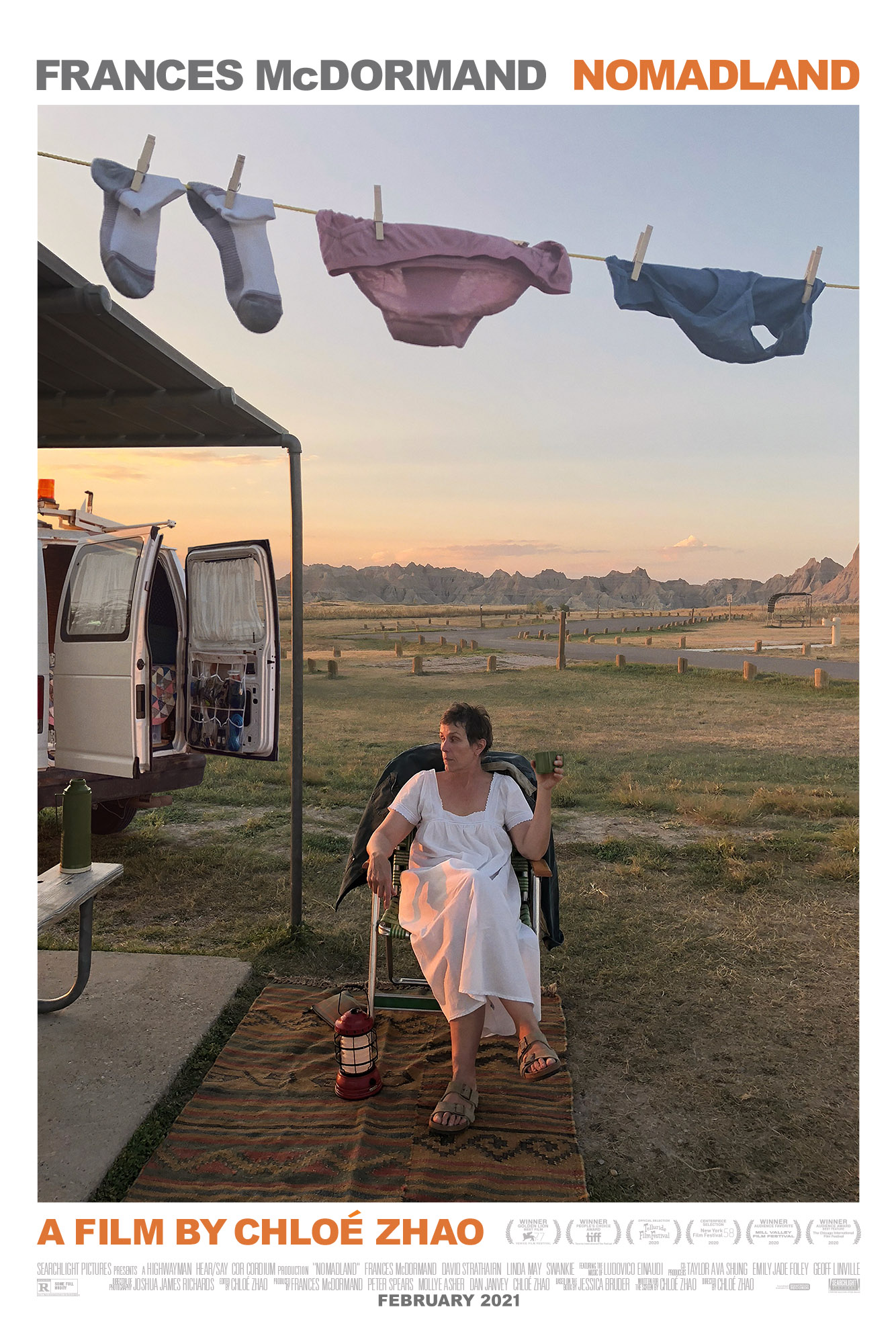
Nomadland
Nomadland
Directed by Chloé Zhao, 'Nomadland' tells the story of Fern, a 60-year-old woman who, after losing everything in the Great Recession, lives in a van and adopts a modern nomadic lifestyle in the American West. The film profoundly explores the impact of economic instability on women and the possibility of seeking dignity and freedom in capitalist society.
主演
🎥 影评与解读
Chloé Zhao’s “Nomadland” stands as a profoundly socially critical feminist film that reveals, through one 60-year-old woman’s modern nomadic life, the economic vulnerability and social marginalization faced by women—particularly older women—in contemporary capitalist society. This film serves not only as an indictment of American economic inequality but as a tender tribute to women’s resilience and dignity in adversity.
The Gendered Face of Economic Precarity
Fern’s character design itself carries strong feminist implications. As a 60-year-old widow, she represents one of American society’s most vulnerable groups—elderly women. After the 2008 economic crisis, she loses her job, home, and stable life, yet she doesn’t choose dependence on others or government assistance but rather an independent though marginalized lifestyle. This choice is both forced and active, embodying women’s complex response strategies when facing systemic injustice.
The film’s portrayal of female economic vulnerability is remarkably authentic and profound. Fern’s predicament results not from personal choices but from structural problems. When company towns close and economic recession destroys middle-class life foundations, women often bear the severest consequences. They have smaller retirement savings, weaker social security, and fewer re-employment opportunities. Fern’s story reveals how this gendered economic inequality pushes women to society’s margins.
Labor, Aging, and Female Bodies
The Amazon warehouse work scenes represent the film’s most critical segments. Here Fern performs strenuous physical labor, competing with younger workers, accepting temporary exploitative employment relationships. This “gig economy” is especially cruel to elderly women, who must exchange bodily health for meager income. The film doesn’t romanticize this labor but directly presents capitalism’s exploitative nature toward vulnerable groups.
The physical toll of nomadic life on aging female bodies isn’t hidden or sanitized. Fern’s body bears the pain of harsh living conditions, yet she isn’t portrayed as victim or object needing rescue. Instead, she demonstrates remarkable adaptability and survival wisdom. This affirmation of elderly women’s agency challenges social stereotypes about the elderly, particularly elderly women.
Agency Within Constraint
However, “Nomadland’s” power lies not only in critique but in showing women’s subjectivity and dignity amid hardship. Though Fern’s nomadic life is difficult, she maintains choice. She can decide when to leave, where to go, whom to interact with. This autonomy, though limited, represents precious freedom for an elderly woman abandoned by mainstream society.
The concept of “houselessness, not homelessness” articulated by the nomads represents a reclaiming of narrative. By rejecting society’s definition of their situation as failure or tragedy, they assert their right to define their own lives on their own terms. This linguistic resistance parallels feminist efforts to reclaim and redefine language that has been used to marginalize women.
Female Solidarity and Mutual Aid
The film’s female mutual aid networks deserve particular attention. Women in the nomadic community support each other, sharing resources and experiences, forming an informal but effective social security system. This female solidarity isn’t based on political ideology but on shared survival needs. They teach each other vehicle repair, share job information, and help during difficulties. This practical feminism proves more powerful than any theoretical manifesto.
Linda May’s inclusion adds authenticity and depth to the film. As an actual nomad, her presence blurs documentary and fiction boundaries, reminding audiences these struggles are real. Her explanation of her choice—“I’m not homeless, I’m just houseless”—embodies efforts to redefine normal life. This redefinition challenges capitalism’s equation of worth with property ownership, suggesting alternative value systems.
Nature, Spirituality, and Female Freedom
Natural environments in the film serve not merely as backdrop but as spiritual sustenance. The American West’s magnificent landscapes provide Fern with spiritual comfort transcending material deprivation. This connection with nature can be understood as feminist ecological consciousness, suggesting possibilities for harmonious coexistence with nature and questioning consumerist lifestyles.
The recurring motif of rocks and geological time provides perspective on human struggles. Against the backdrop of ancient landscapes, capitalism’s demands and social expectations seem temporary and arbitrary. This perspective offers a form of liberation from social pressures that particularly burden women—to maintain appearance, accumulate possessions, conform to conventional success metrics.
Death, Memory, and Female Narrative
The film’s treatment of death is profound. Fern encounters death on her journey—both others’ deaths and her own contemplation of mortality. But death here doesn’t symbolize despair but rather life’s natural cycle. This acceptance and understanding of death embodies mature life wisdom often associated with feminine knowledge traditions.
Memory, particularly memories of her deceased husband and lost town, haunts Fern’s journey. Yet these memories aren’t portrayed as chains holding her back but as integral parts of her identity that she carries forward. This treatment of memory as both burden and treasure reflects how women often serve as keepers of family and community memory, even when those communities no longer physically exist.
Chloé Zhao’s Directorial Vision
Director Chloé Zhao, as an Asian female filmmaker, brings unique perspective to the film. She’s simultaneously an outsider, able to examine American social problems with relative objectivity, while possessing keen social observation and deep humanistic concern. Her directorial style emphasizes combining authenticity with poetry, adding aesthetic transcendence to this heavy theme.
Zhao’s use of non-professional actors alongside McDormand creates a hybrid form that refuses easy categorization. This approach mirrors the film’s subjects, who exist between traditional categories—neither fully employed nor unemployed, neither conventionally housed nor homeless. This formal innovation serves the film’s political project of challenging binary thinking that often constrains women’s lives.
Political Critique and Alternative Visions
The film’s political significance cannot be ignored. It reveals the American Dream’s bankruptcy and questions development models centered on economic growth. Simultaneously, it presents alternative lifestyles—though materially deprived, they offer relative spiritual freedom. This questioning of mainstream values carries profound feminist and anti-capitalist implications.
The film critiques not just economic systems but the social values that underpin them. The emphasis on productivity, accumulation, and conventional success markers that dominate American culture are shown to be particularly punishing for those—like older women—who cannot or choose not to participate in these systems. The nomads’ alternative values of community, experience, and freedom offer a feminist reimagining of what constitutes a meaningful life.
Frances McDormand’s Performance and Production
Frances McDormand’s performance is flawless. She portrays Fern’s resilience, vulnerability, dignity, and pain with extraordinary authenticity. As producer, her advocacy for this project also embodies women’s active role in the film industry. Her commitment to telling this story of an older woman—a demographic typically invisible in Hollywood—represents a feminist intervention in cinema’s representational politics.
McDormand’s physical transformation for the role, eschewing Hollywood beauty standards, makes a powerful statement about the value of authentic representation over glamorization. Her weathered face and capable body become symbols of lived experience and earned wisdom rather than decline or loss.
The Feminization of Poverty
“Nomadland” illuminates the feminization of poverty in contemporary America. The film shows how economic policies and social structures systematically disadvantage women, particularly as they age. The closure of traditional pension systems, the rise of precarious employment, and the weakening of social safety nets all disproportionately impact women, who often have interrupted career trajectories due to caregiving responsibilities.
The film also reveals how poverty is experienced differently by women. The concerns about safety, the need for community, the strategies for maintaining dignity—all these aspects of Fern’s experience are shaped by her gender. The film doesn’t universalize poverty but shows its specific manifestations in women’s lives.
Hope Within Critique
Ultimately, “Nomadland” conveys not despair but complex hope. It tells us that even in the most difficult circumstances, people can maintain dignity, seek meaning, and build connections. For women, this film holds special significance because it shows how women can create their own lifestyles and value systems even after being abandoned by mainstream society.
The film’s ending, with Fern returning to the road after briefly attempting conventional life, suggests that freedom—even precarious freedom—may be preferable to security that comes with conformity. This choice resonates with feminist arguments about autonomy and self-determination, suggesting that women’s liberation may require rejecting conventional securities.
Legacy and Impact
“Nomadland” has opened crucial conversations about aging, poverty, and gender in contemporary America. It has made visible a population—older working-class women—typically absent from cultural representation. The film’s critical and commercial success, including Best Picture at the Academy Awards with Zhao becoming the second woman to win Best Director, suggests growing recognition of the importance of these stories.
The film stands as a tribute to all those marginalized by modern society, particularly women who maintain dignity and hope amid hardship. It reminds us that true wealth lies not in material accumulation but in human connections and the persistence of freedom and dignity. Through Fern’s journey, “Nomadland” offers both a critique of contemporary capitalism and a feminist vision of resilience, community, and alternative values that transcend economic metrics of worth.
🏆 获奖与荣誉
- • 93rd Academy Award for Best Picture
- • 78th Golden Globe for Best Drama
- • Venice Film Festival Golden Lion
⭐ 评分与链接
相关推荐
讨论区
分享您的想法和观点
加入讨论
分享您的想法和观点
加载评论中...

